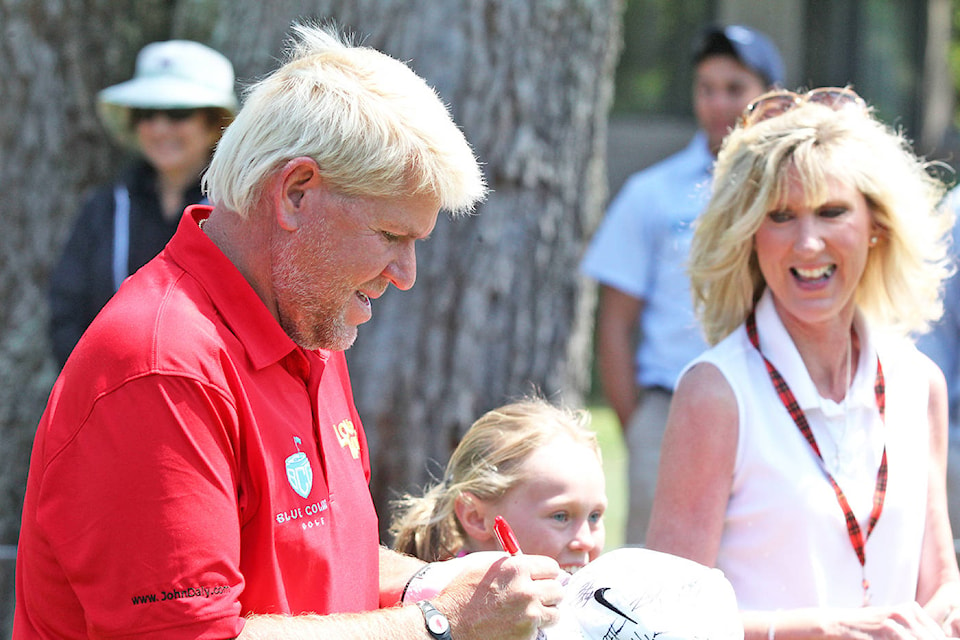Since the backswing is what puts a golfer’s body into the position that will be the base of making proper contact with the ball, it’s kind of important, according to Storey Creek Golf Course’s Adam Haddad. Unfortunately, many golfers, in an effort to generate as much power as possible, suffer from “overswing,” or taking the club too far back, which leads to significant problems later in the motion.
“In my many years of teaching this tends to cause serious problems with consistency and doesn’t create any more power then a parallel position at the top of the back swing,” Haddad says. “Overswinging causes more moving parts and pieces in the golf swing such as too big a body turn, a collapsing lever arm, which results in the bending of the left elbow for right handers, cupping or overcocking the wrists, opening the fingers of the lever arm hand, collapsing or totally straightening the rear leg, a reverse pivot, which creates the spine toward the target with the weight on the forward leg at the top of the swing.”
Overswinging is usually a problem, he says, because the more moving parts one has and the farther out of position one gets the more difficult it is to bring the club back to the appropriate place at the appropriate time, let alone do it consistently.
“There are some players that have had success with a longer backswing position, such as John Daly, Tom Watson and Nancy Lopez, but I have never met anybody who teaches to overswing, as this tends to have negative results for most of us when it comes to creating consistency and enjoyment of the game,” Haddad says.
Thankfully, correcting an overswinging problem is not difficult to do, but it will take some practice and discipline to correct.
“The best way to work on this is to check your backswing position at the top when you practice,” Haddad says. “The best way to do this is with a mirror so you can see your back-swing position at the top of your swing. When you check your back-swing position you are looking to make sure you have reached the proper position, which means the club is not past parallel. I recommend to my students to rehearse the back position twice before they hit each shot.”
Here are the check points Haddad recommends to look for to create a solid backswing position. If these checkpoints are correct it is not possible to overswing, he says.
1. Both eyes can see the ball, close your eye closest to the target to test this, make sure your open eye never loses sight of the ball.
2. Your spine angle is still relatively vertical from the face on view, not leaning toward the target.
3. Your weight is noticeably heavier on your rear leg and that your rear knee maintains at least some degree of flexion, also that the knee has not moved to a new position, and does not point in a direction outside the foot
4. Your lever arm (left arm for right-handers) is extended, not collapsed or severely bent at the elbow.
5. Your hands and wrists are under control, make sure the fingers of the lever arm hand have not opened and that the butt end of the grip is still in contact with the palm of the hand. Make sure that the wrist is not dramatically cupped, which would look like the back of the hand is bent back toward top of forearm. Finally make sure the angle between the shaft and the lever arm does not exceed 90 degrees.
CONTEST TIME
Let’s give the ladies some love!
Next weekend is the KPMG Women’s PGA Championship at Kemper Lakes Golf Club in Kildeer Illinois.
Pick a golfer in the field to win it all and email her name (and yours, obviously) to miked@campbellrivermirror.com for your chance to win golf passes to one of our great local courses.
Picks must be in by 9 p.m. June 27 (next Wednesday) to qualify.
